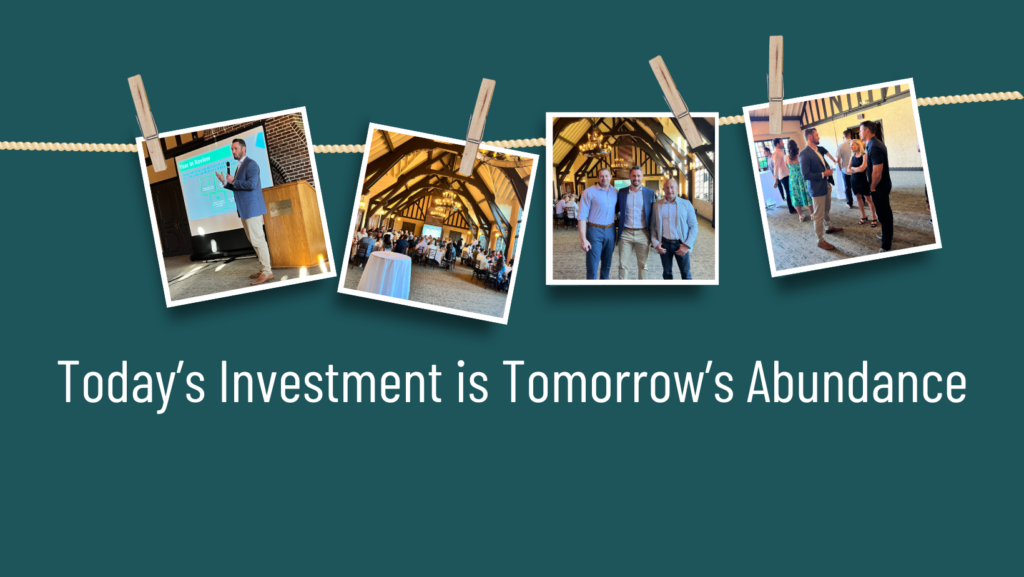WHAT IS A REAL ESTATE INVESTMENT FIRM? A real estate investment firm takes funds from clients and gives them returns on those …

Keepin' it Real Estate Podcast with Chris & Collin
Monthly Blog Post
September Blog Post
The Importance of Risk Mitigation for Multifamily Property Owners and Tenants
By: Megan Richardson
As we continue to manage and expand our multifamily property portfolio, emphasizing risk mitigation is crucial. By taking proactive measures to manage risks, we not only safeguard our investments but also ensure operational stability and protect both our assets and our tenants.
In this edition, we’ll explore the significance of risk mitigation for property owners, its impact on tenants, and why requiring tenants to carry renter’s insurance is a vital aspect of our overall strategy.
Risk Mitigation for Multifamily Property Owners
Owning and managing multifamily properties involves a range of risks, from natural disasters and liability concerns to maintenance issues. Here are key strategies we implement to protect our assets:
- Comprehensive Insurance Coverage
Maintaining robust insurance coverage is fundamental to mitigating risk. This includes property insurance, liability insurance, and business interruption insurance. Such coverage protects us against financial losses from fires, storms, vandalism, or other unforeseen events. - Regular Property Inspections & Maintenance
Preventive maintenance plays a critical role in minimizing risks. Regular inspections help identify and address potential hazards—such as faulty wiring, plumbing issues, or structural weaknesses—before they escalate. This proactive approach reduces the risk of accidents and liability claims. - Safety and Security Enhancements
Investing in security systems, proper lighting, and fire safety equipment enhances tenant safety and reduces the likelihood of accidents, theft, or property damage. These measures also help lower liability exposure. - Legal Compliance
Keeping up with local and federal regulations related to building codes, tenant rights, and safety standards is essential. Compliance avoids penalties and potential lawsuits, ensuring we meet all legal requirements.
The Impact of Risk Mitigation on Tenants
Effective risk mitigation directly benefits our tenants. Here’s how:
- Enhanced Safety
A well-maintained property with effective security measures and up-to-date safety features provides a secure living environment. - Reduced Incidents
Proactive repairs and regular maintenance help prevent accidents, water leaks, and electrical issues, leading to fewer disruptions for tenants. - Stable Living Environment
Risk management ensures minimal interruptions in property operations, contributing to overall tenant satisfaction and peace of mind.
The Importance of Tenants Carrying Renter’s Insurance
While we manage risks associated with the property, it’s crucial for tenants to protect their personal belongings and liability through renter’s insurance. Here’s why:
- Personal Property Protection
Renter’s insurance covers tenants’ personal belongings in case of theft, fire, or damage, reducing their financial burden and enhancing their sense of security. - Liability Coverage
If a tenant accidentally causes damage to their unit or another unit (e.g., through a kitchen fire or plumbing issue), renter’s insurance can cover the cost of repairs. This reduces out-of-pocket expenses for tenants and helps prevent disputes. - Peace of Mind
With both the property and their personal belongings protected, tenants enjoy greater security, which improves overall tenant retention and satisfaction.
Conclusion
Effective risk mitigation is a collaborative effort between property owners and tenants. As property owners, we are committed to investing in the maintenance and enhancement of our properties to ensure a safe and secure living environment. In turn, requiring tenants to carry renter’s insurance strengthens our overall risk management strategy, providing additional protection for everyone involved.
Thank you for your continued trust and partnership as we work together to mitigate risks and protect our investments. Should you have any questions or need further insights into our risk management practices, please feel free to reach out.
August Blog Post
The Cornerstones of Successful Multifamily Real Estate Syndication: Transparency, Communication and Managing Investor Expectations
By: Jason Belt
In the dynamic world of multifamily real estate syndication, the role of a capital raiser and investor relations manager is pivotal.
LeavenWealth’s success hinges not only on the properties we acquire but also on the trust and confidence we build with our investors. Let’s explore three fundamental principles that underpin this trust: transparency, open communication, and managing investor expectations. These principles are not just buzzwords; they are the bedrock of our operations and the key to fostering long-term, fruitful relationships with our investors.
The Importance of Transparency
Transparency is the foundation of trust. In multifamily real estate syndication, where significant sums of money are at stake, investors need to feel confident that their capital is being managed responsibly and ethically. Transparency involves providing clear, honest, and timely information about every aspect of the investment process. This doesn’t just mean providing information, it means presenting it in a way that is clear and easy to understand for each investor, regardless of what walk of life they come from. This doesn’t mean beating investors over the head with definitions, but it does mean being clear and providing a clear channel of communication for investors to ask questions.
Detailed Financial Reporting
One-way LeavenWealth ensures transparency through detailed financial reporting. For instance, we provide quarterly reports that include comprehensive financial statements, updates on property performance, and any significant developments. These reports are not just a summary of numbers; they include explanations and context to help investors understand the financial health of their investment. In addition, we provide a video to accompany our updates to make sure that more of the nuanced details are explained.
Open Access to Information
LeavenWealth also maintains an investor portal through Juniper Square, where all relevant documents, from purchase agreements to property management reports, are readily accessible. This open access allows investors to review information at their convenience and fosters a sense of ownership and involvement in the investment process. Our investor portal also provides up to date returns individually and across all projects you are invested in to ensure you know how you investment is trending to our goals.
The Power of Open Communication
Open communication goes together with transparency. It involves not only sharing information but also actively listening to and addressing investor concerns. Effective communication builds a strong relationship between us at LeavenWealth and our investors, ensuring that everyone is on the same page. Open communication means that there is mutual investment between the deal sponsors and the investors. This looks like being preemptive in communication if there is a coming change of plans. If an investment is underperforming, its important to examine the decision-making process that led to this point and consider adjustments to get things back on track.
This does not just go for bad news, one thing that sponsors and syndications don’t do enough of is celebrating the wins and the successes. If an investment is crushing it, highlight it in the newsletter or send out an email update. The positive communication should far outweigh the negatives in terms of quantity of outgoing communication to investors.
Example: Regular Updates and Meetings
LeavenWealth schedule regular updates and meetings with our investors. These can be in the form of monthly newsletters, quarterly webinars, or annual in-person meetings. During these sessions, we discuss property performance, market trends, and any upcoming projects.
This consistent communication helps keep investors informed and engaged. We also schedule Il’s on a needs basis with investors who have questions.
Example: Responsive Investor Relations
Our investor relations team is always available to answer questions and provide support. Whether it’s a query about a specific property or a broader question about market conditions, we ensure that our investors receive prompt and thorough responses. This responsiveness demonstrates our commitment to investor satisfaction and builds trust.
Managing Investor Expectations
Managing investor expectations is crucial for maintaining a positive relationship and avoiding misunderstandings. It involves setting realistic goals, providing clear timelines, and being upfront about potential risks and challenges.
Example: Setting Realistic Goals
From the outset, we set realistic investment goals. We provide detailed projections based on thorough market analysis and historical data.
By setting achievable targets, we help investors form realistic expectations about returns and timelines. So much of this is helping our investors understand the upsides and potential downsides of the BRRR method we apply to our value and properties.
Example: Clear Communication of Risks
We are upfront about the risks involved in multifamily real estate investments. While we strive for success, we acknowledge that there are factors beyond our control, such as market fluctuations and economic downturns. By clearly communicating these risks, we help investors make informed decisions and prepare for potential challenges. The need for clear and open communication is most important when discussing risks – be clear, have a plan, and communicate the plan.
Example: Transparent Performance Metrics
We use transparent performance metrics to track and report on the progress of our investments. These metrics include occupancy rates, rental income, and expense ratios. By providing clear and measurable indicators of performance, we help investors understand how their investment is performing relative to the initial projections.
Building Long-Term Relationships
Ultimately, LeavenWealth’s goal is to build long-term relationships with our investors. By prioritizing transparency, open communication, and managing expectations, we create a foundation of trust and mutual respect. These principles not only enhance investor satisfaction but also contribute to the overall success and sustainability of our syndication projects.
Example: Celebrating Successes Together
We believe in celebrating successes with our investors.
When a property achieves a significant milestone, such as reaching full occupancy or completing a major renovation, we share the news and celebrate together. This fosters a sense of community and shared achievement.
Example: Learning from Challenges
We also believe in learning from challenges. When things don’t go as planned, we are transparent about the issues and work collaboratively with our investors to find solutions.
This approach not only builds trust but also demonstrates our commitment to continuous improvement.
Conclusion
In the multifamily real estate syndication business, the principles of transparency, open communication, and managing investor expectations are not just best practices; they are essential for success. LeavenWealth and our investment community succeed by embracing these principles. We build trust, foster strong relationships, and create a positive experience for our investors. As we continue to grow and evolve, we remain committed to these core values, knowing that they are the key to our long-term success and the satisfaction of our investors.
Thank you for being a part of LeavenWealth’s journey.
Together, we are building more than just properties; we are building a community of trust and shared legacy that will continue to provide financial freedom.
July Blog Post
Investor Insights
Things You Need To Know About Leverage When Investing In The Real Estate Even though producing millions overnight is nearly impossible, investors …
That time of year when you’re looking at your tax bill and you probably have plenty of thoughts, emotions, and words…most of …








